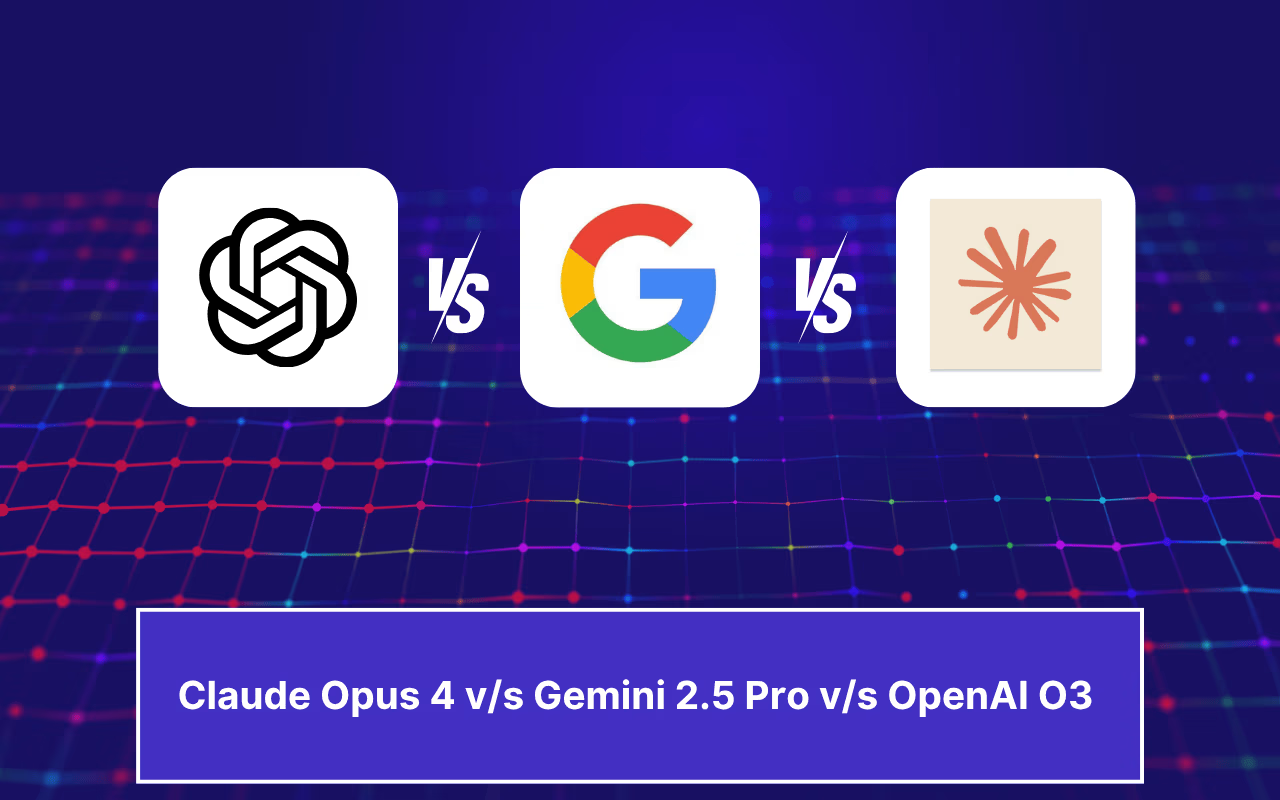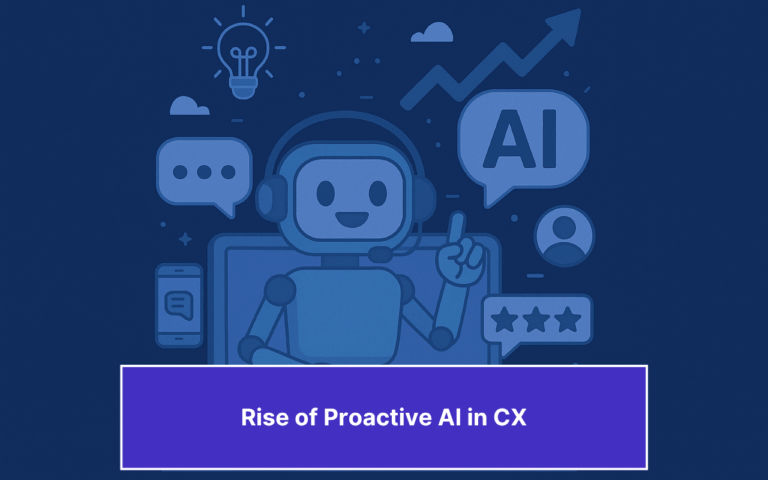Updated on June 3, 2025
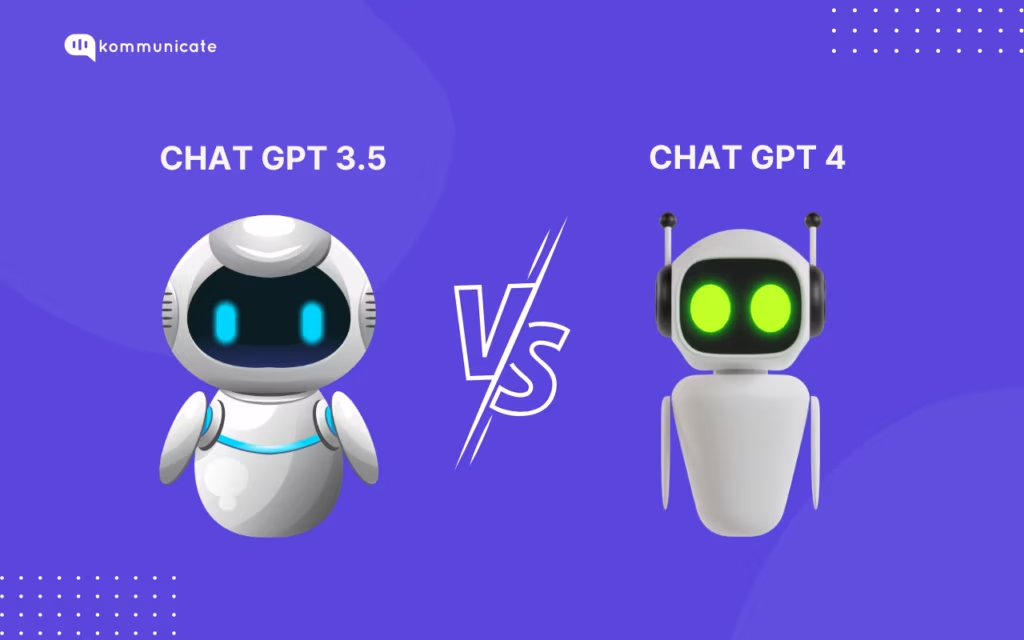
November 30, 2022, marked a silent revolution as ChatGPT, a general-purpose chatbot, quietly emerged from the then-unknown company OpenAI. Within 5 days, it amassed 1 million users, outpacing Netflix and Twitter’s growth milestones. By February 2023, it set the record for the fastest-growing consumer app in internet history.
As the world was just settling in and getting in awe of how amazing ChatGPT was, OpenAI unveiled ChatGPT 4.0 in March 2023, powered by the GPT-4 engine. This new version marked a significant advancement over its predecessor, ChatGPT 3.5 typically in areas such as natural language understanding, better context retention, and more nuanced responses.
In this article, we will cover the key difference between the GPT-3.5 and 4 models and also provide a comparison of OpenAI’s pricing for all models, including the newly launched ChatGPT 4o model. Also, if you are looking for a comprehensive comparison between GPT 4 Turbo, Gemini Claude 3 Opus, and Google Gemini 1.5 Pro, check it out here. Alternatively, if you wish to read about OpenAI o1, click here.
However, before jumping to the differences, let’s first understand what ChatGPT is and how it works –
Understanding ChatGPT
ChatGPT, developed by OpenAI, is an application designed to interact with GPT (Generative Pre-trained Transformer), an advanced language model driving generative artificial intelligence. These large language models, commonly referred to as LLMs, typically consist of several key components that work together to enable language understanding and generation tasks. Essentially, they serve as powerful engines for computers, capable of writing stories, translating languages, and providing natural responses to questions.
In practical terms, ChatGPT functions as a versatile tool for engaging with GPT, the powerhouse behind its capabilities. It operates as a user-friendly interface, allowing individuals to interact with the complex process of language understanding and generation facilitated by LLMs. Through ChatGPT, users can easily input queries, prompts, or requests, generating responses across a wide spectrum of tasks, from composing stories and songs to coding complex programs and crafting marketing messages, among others.
Automate support workflows and resolve queries faster with AI-powered email ticketing from Kommunicate!ChatGPT 3.5 vs. 4.0
The main distinction between GPT-3.5 and 4 resides in their scale and capabilities. While GPT-3.5 was trained on 175 billion parameters, GPT-4 likely surpasses 100 trillion parameters, indicating a substantial increase in size and sophistication. This improvement enables GPT-4 to provide more nuanced and contextually relevant responses, pushing the limits of natural language processing and establishing new benchmarks for conversational AI systems.

Let’s look at some of the other key differences –
ChatGPT 4 is Multimodal
A significant drawback of ChatGPT 3.5 was its “unimodal” nature, meaning the chatbot solely comprehends and interprets text input. ChatGPT 4 represents a significant advancement as it is powered by the GPT 4 engine, which is multimodal.
ChatGPT 4 can now understand and process even images, and it accepts both text and image prompts. In a developer livestream organized by OpenAI, Greg Brockman, one of the co-founders, showed how powerful ChatGPT 4’s image processing capabilities actually are.
Greg held up a photo for a joke website for which he needs code, and then sent it to ChatGPT 4.
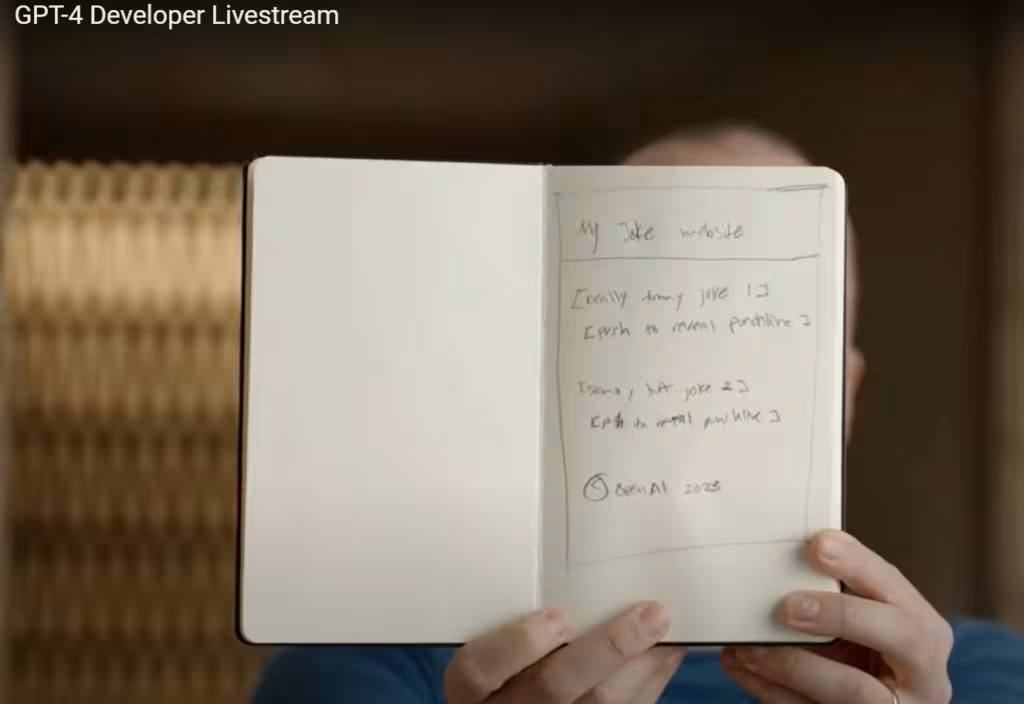
The chatbot then processed this image, and generated an entire Javascript code for the website within a few seconds.
This is how the code and the final website looks like:
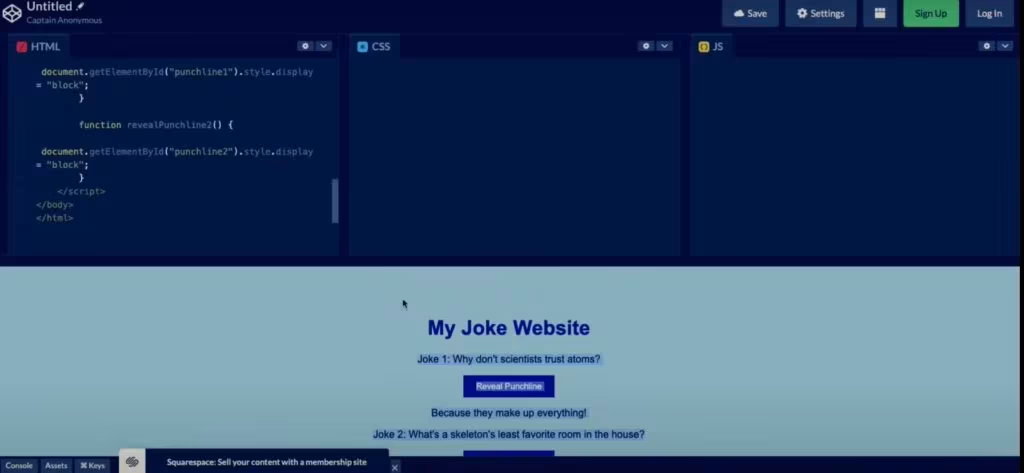
Not bad for an LLM no? The applications of this technology are revolutionary, and entire websites can now be coded in a matter of hours, if not minutes.
Programmers beware – ChatGPT 4 just upped the game. Of course, the chatbot still cannot generate images, and is only capable of accepting image inputs at the moment.

ChatGPT 4 has much more Processing Power compared to GPT 3.5
When it comes to the sheer processing power or the ability to solve complex scientific and mathematical problems, ChatGPT 4 is way ahead of ChatGPT 3.5.
ChatGPT 4 can solve various problems and equations in subjects as varied as calculus, geometry and algebra. ChatGPT 3.5 on the other hand, can only give us the direction we must take to solve the problem, rather than providing the actual solution.
To put both the models to the test, we asked both ChatGPT 3.5 and ChatGPT 4 to calculate the trajectory of a projectile under the influence of gravity and incorporating air resistance.
This is the response that ChatGPT 3.5 generated.
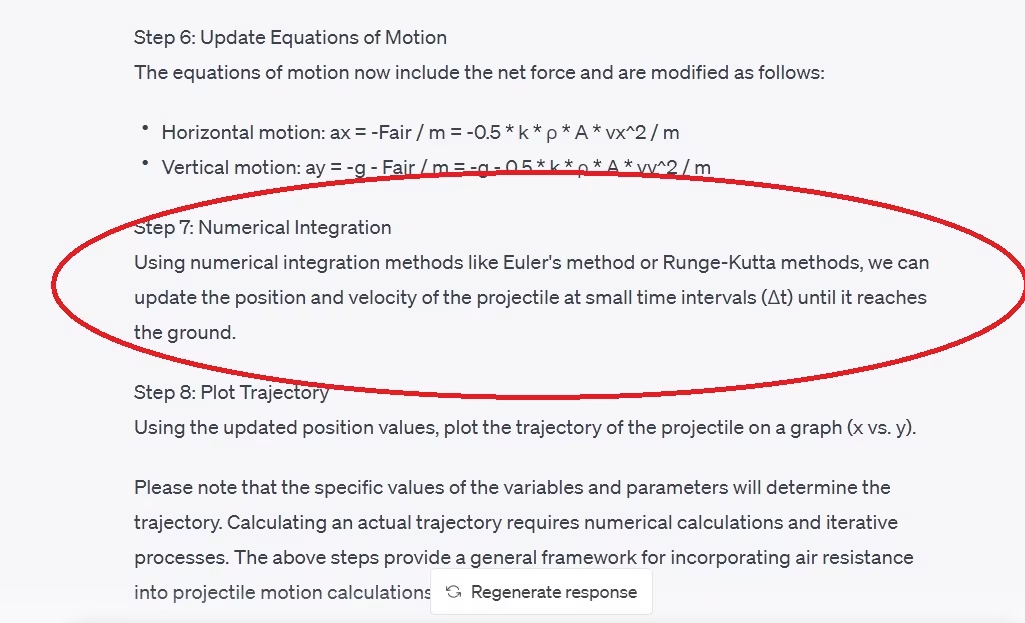
ChatGPT 4 on the other hand went ahead and gave the actual Runge Kutta method for solving this problem.Z
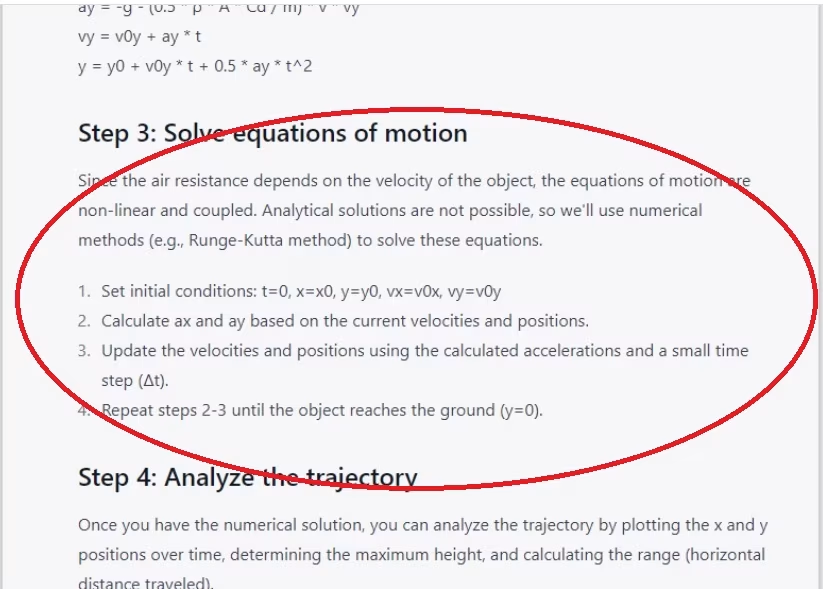
ChatGPT4 can also analyze complex scientific concepts and can simulate entire chemical reactions based on inputs. If you are a science enthusiast, then ChatGPT 4 can act as a very good personal assistant, giving you solutions to actual problems much faster than search engines.
ChatGPT 4 responses are much more “Nuanced”
One major drawback of ChatGPT 3.5 was that it was failing to understand the subtle nuances when it came to natural human language. ChatGPT 3.5 was not able to “get” jokes or sarcasm.
When it comes to creativity, ChatGPT 4 has leapfrogged far ahead of its predecessor. ChatGPT 4 can produce improved poems or essays with much better coherence and creativity.
A major reason behind this advanced capability is that ChatGPT4 has an improved context window. ChatGPT4 can now retain up to 25,000 words of chats for context from chats, while ChatGPT 3.5 has a mere 3000 words.
Check out this poem that we found on Reddit that ChatGPT 4 wrote, around traffic lights.
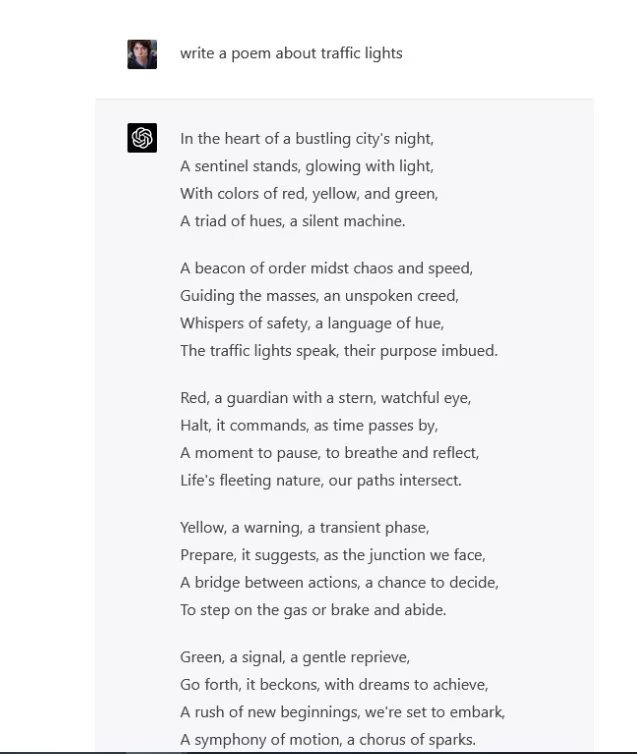
We gave the same prompt to ChatGPT 3.5, and the poem, although rhyming, was far less creative
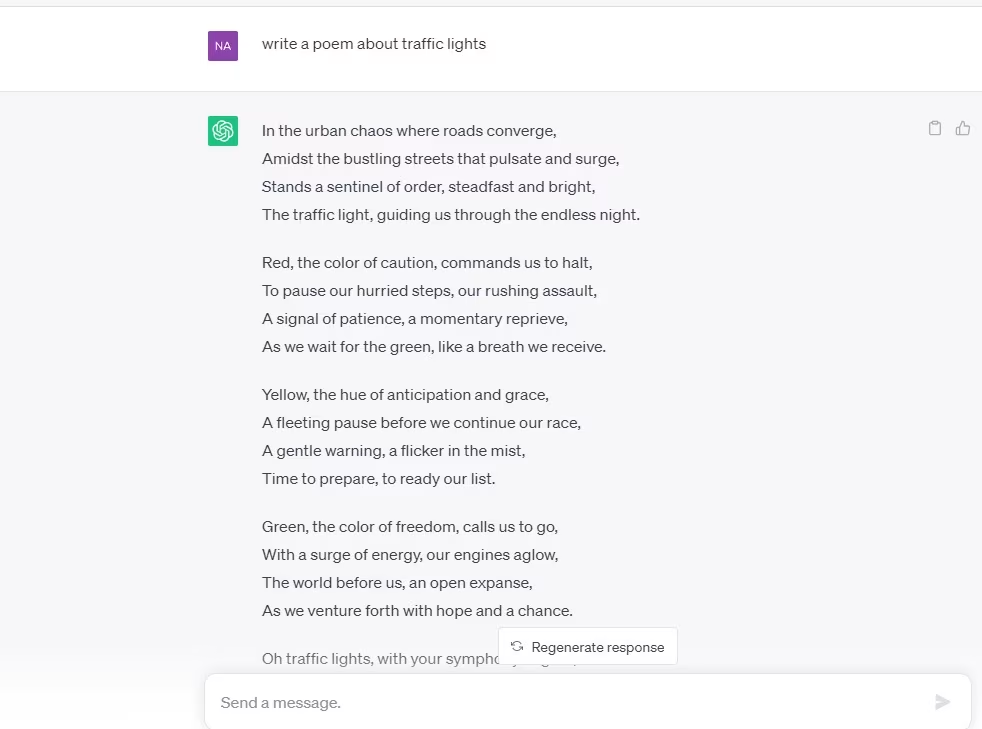
ChatGPT4 even writes good short stories and essays, based on the prompts that you give it. This can also extend to novels, where ChatGPT4 can churn out novels with well thought out plot and character development, features that ChatGPT 3.5 had difficulty with.

ChatGPT 4 is more Accurate, less prone to “Hallucinations”
ChatGPT 3.5 was based on the GPT 3.5 engine, which received training on over 175 billion training parameters. ChatGPT 4 took this training one step further, and is purportedly trained on over a trillion parameters. What does this mean?
This means that ChatGPT4 will consider those trillion parameters before formulating a response. When ChatGPT 3.5 was initially released, there were instances where people were asking the chatbot ways to hack into banking websites and known vulnerabilities in other popular sites. This will not be possible in ChatGPT4.
Other topics that ChatGPT4 will stay clear of are:
1. Party politics – ChatGPT will not get into a debate arguing one political party is better than the next, and will stay objective in its responses.
2. Creating malware: Unlike ChatGPT 3.5, you cannot use ChatGPT 4 to create malware, and OpenAI has put in measures to check this.
3. War and physical violence: ChatGPT will not pass comments on, say, the Ukraine war.
These are just some of the areas where ChatGPT does not understand the user input, just like a regular chatbot. In such cases, large language models (LLMs) provide what are known as “ hallucinations.” This is because the model relies on primary learning data or knowledge patterns to generate responses.
According to a tweet by Sam Altman, founder of OpenAI, ChatGPT 4 “hallucinates significantly less.”
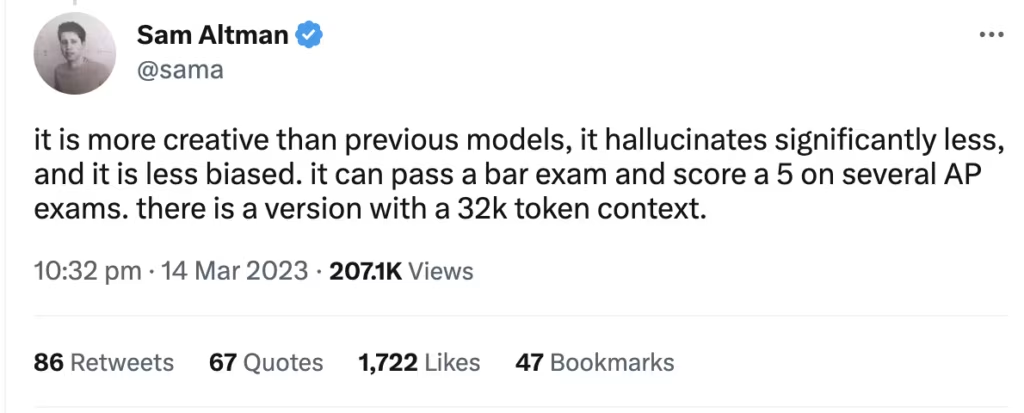
If you wish to see a video summary of everything we have discussed this far, check out this video:
Latest GPT 4 Models
OpenAI is continually enhancing the capabilities of its GPT models. Following the release of the GPT-4 model in March 2023, OpenAI has introduced several notable updates and features to further improve its AI systems, including the launch of GPT-4 Turbo and GPT-4o models. Here’s a quick comparison of all GPT 4 Models
| Parameter | GPT-4 | GPT-4 Turbo | GPT-4o |
| Model Size | Large-scale transformer | Optimized large-scale model | Optimized for specific tasks |
| Token Size | 8,000 tokens | 16,000 tokens | Variable, task-dependent |
| Training Data | Diverse internet sources | Enhanced diverse internet sources | Specialized datasets |
| Performance | High accuracy and versatility | Improved speed and efficiency | Specialized task performance |
| Cost | Standard pricing | More cost-effective | Variable, depending on task |
| Use Cases | General-purpose AI tasks | High-demand applications | Niche and specialized applications |
The Pricing
OpenAI offers varied pricing for its different models, typically based on units of either 1M or 1K tokens. Tokens represent individual units of language, with 1,000 tokens roughly equivalent to 750 words.
Here’s a table comparing the prices of ChatGPT 4, ChatGPT 3.5 Turbo, and, ChatGPT 4 Turbo – which was recently launched
OpenAI also provides Assistant APIs that makes it easy for developers to build AI assistants in their applications. The tokens used for the Assistant API are billed at the chosen language model’s per-token input/output rates. For all further details, please refer to the Pricing page of OpenAI
| Model | Input | Output |
| GPT – 4o | $5.00/1M tokens | $15.00/1M tokens |
| GPT-4 Turbo | $10.00 /1M tokens | $30.00 /1M tokens |
| GPT- 4 | $30.00 /1M tokens | $60.00 /1M tokens |
| GPT-4 – 32k | $60.00 /1M tokens | $120.00 /1M tokens |
| GPT-3.5 – Turbo – 0125(Supports 16k context) | $0.50 /1M tokens | $1.50 /1M tokens |
| GPT-3.5 – Turbo -instruct(Instruct Model that supports a 4k context window) | $1.50 /1M tokens | $2.00 /1M tokens |
Final words
AI capabilities are evolving swiftly, exceeding expectations. GPT-4 has notably surpassed GPT-3.5, and now, with the debut of GPT -4o , boundaries are being pushed even further. While these advancements are expected to continue rapidly, it’s vital to approach this potential cautiously. Organizations, while striving to maximize the benefits of this technology, must also carefully weigh the ethical implications and potential risks linked with AI deployment. Prioritizing responsible and ethical AI practices is essential, ensuring that innovation is balanced with concerns for privacy, security, and societal impact.

CEO & Co-Founder of Kommunicate, with 15+ years of experience in building exceptional AI and chat-based products. Believes the future is human + bot working together and complementing each other.
At Kommunicate, we envision a world-beating customer support solution to empower the new era of customer support. We would love to have you on board to have a first-hand experience of Kommunicate. You can signup here and start delighting your customers right away.


